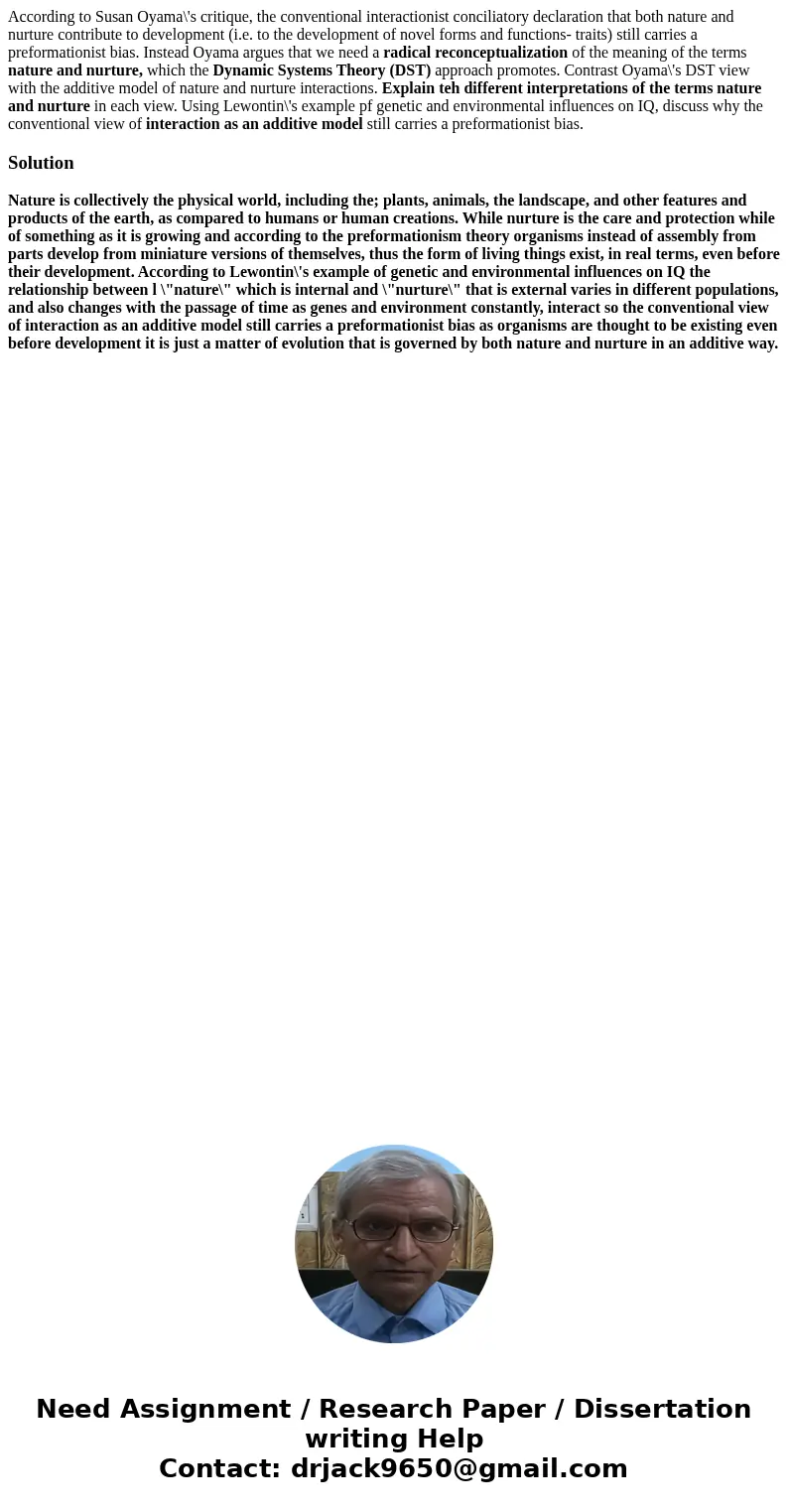According to Susan Oyamas critique the conventional interact
According to Susan Oyama\'s critique, the conventional interactionist conciliatory declaration that both nature and nurture contribute to development (i.e. to the development of novel forms and functions- traits) still carries a preformationist bias. Instead Oyama argues that we need a radical reconceptualization of the meaning of the terms nature and nurture, which the Dynamic Systems Theory (DST) approach promotes. Contrast Oyama\'s DST view with the additive model of nature and nurture interactions. Explain teh different interpretations of the terms nature and nurture in each view. Using Lewontin\'s example pf genetic and environmental influences on IQ, discuss why the conventional view of interaction as an additive model still carries a preformationist bias.
Solution
Nature is collectively the physical world, including the; plants, animals, the landscape, and other features and products of the earth, as compared to humans or human creations. While nurture is the care and protection while of something as it is growing and according to the preformationism theory organisms instead of assembly from parts develop from miniature versions of themselves, thus the form of living things exist, in real terms, even before their development. According to Lewontin\'s example of genetic and environmental influences on IQ the relationship between l \"nature\" which is internal and \"nurture\" that is external varies in different populations, and also changes with the passage of time as genes and environment constantly, interact so the conventional view of interaction as an additive model still carries a preformationist bias as organisms are thought to be existing even before development it is just a matter of evolution that is governed by both nature and nurture in an additive way.

 Homework Sourse
Homework Sourse